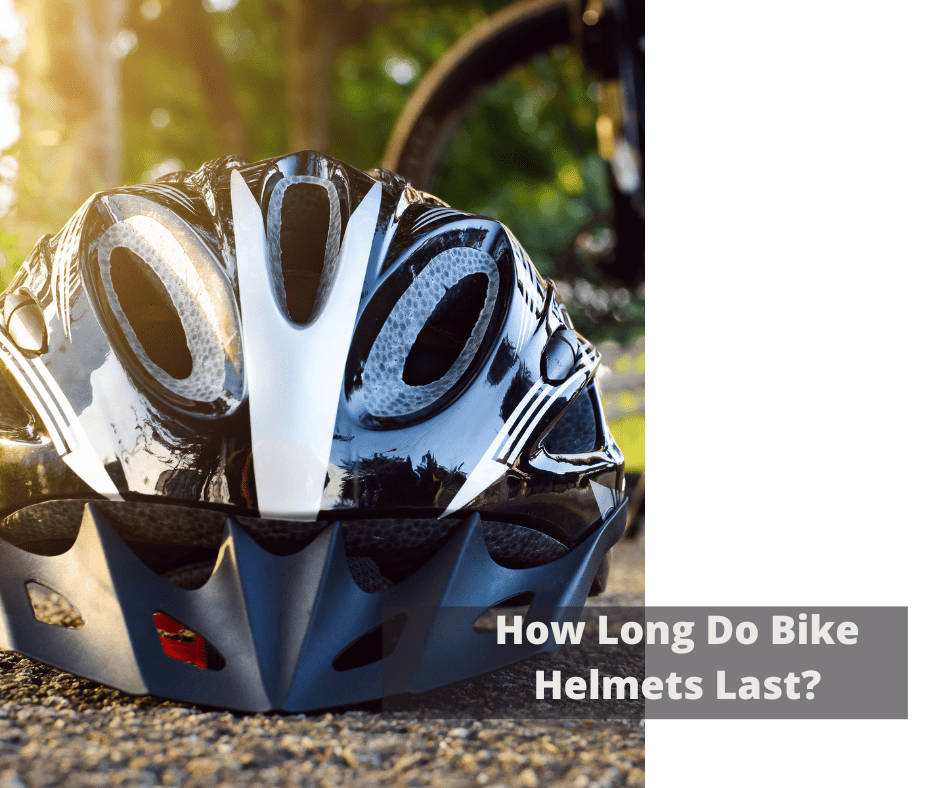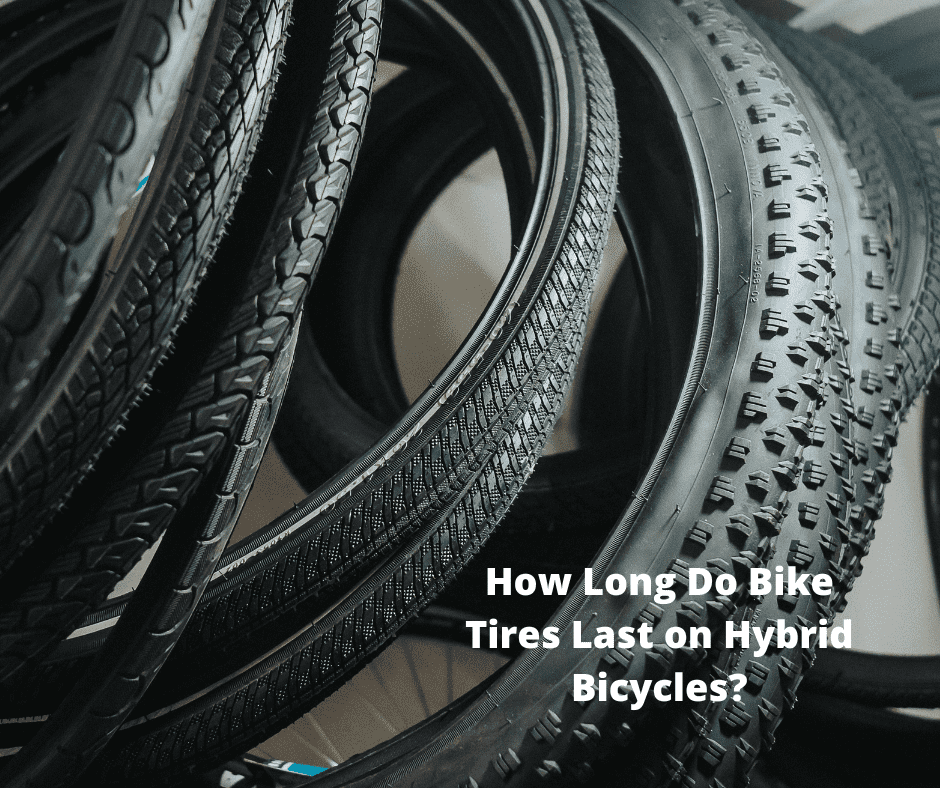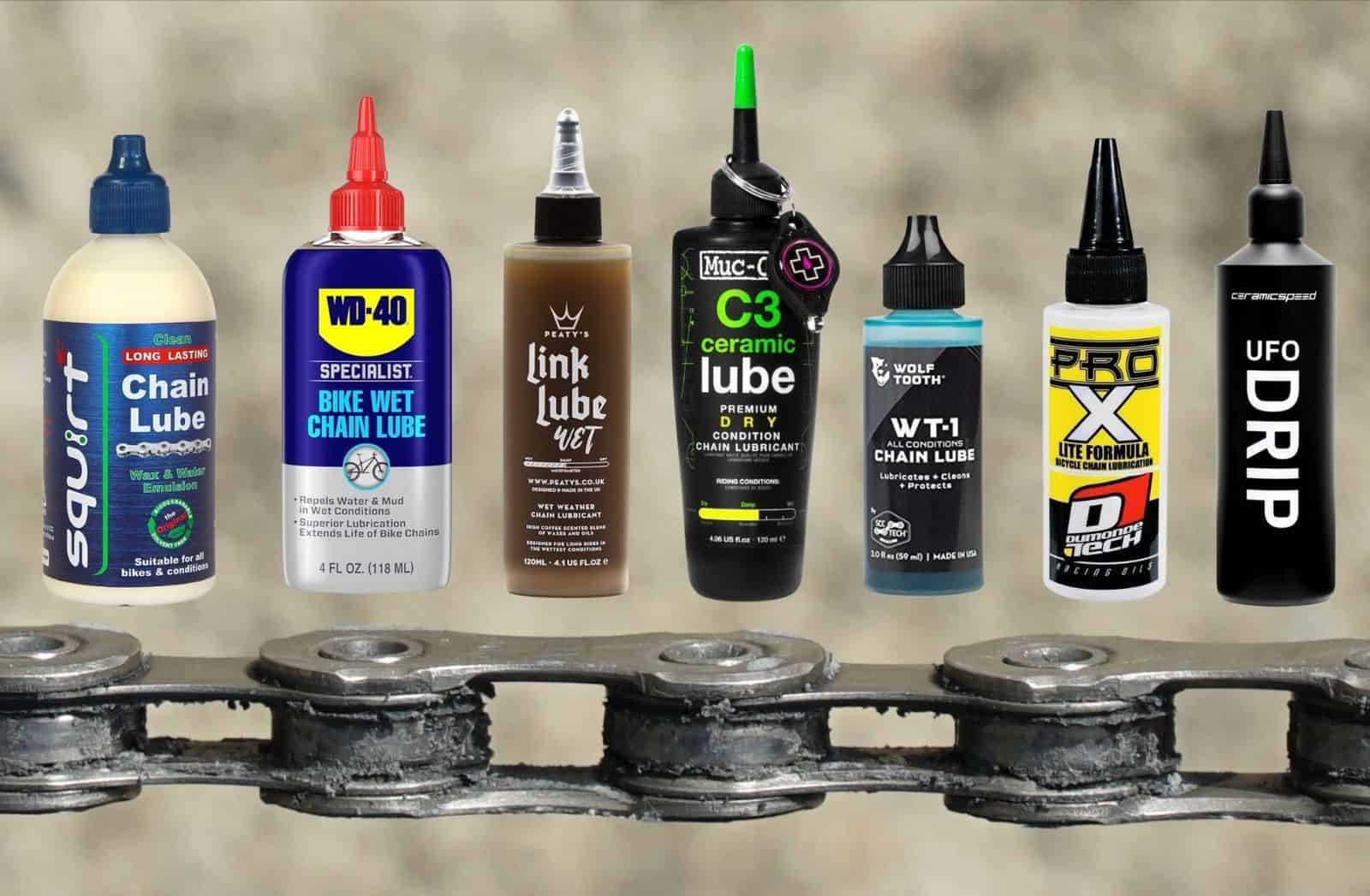Owning a bike helmet is essential for every cyclist, and there’s a common saying that being cautious is preferable to regretting.
Helmets are made of foam and other materials designed to absorb the shock of a crash and protect your head from serious injury.
They come in many different styles and sizes, so there’s something for everyone.
When you buy a bike helmet, you’re investing in your safety. It pays to make sure you have the right fit and that all the straps are adjusted properly.
Make sure to read up on proper bike helmet care techniques to keep your helmet in tip-top shape.

Every bike rider should be aware of when they need to replace their bicycle helmet – typically after several years or after a crash (even if it looks okay).
If the foam is cracked or crushed, or if the straps are frayed or pulled out of place, it might be time for a new one.
Paying attention to these signs can help ensure that your head is safe while riding your bike.
When Should You Replace A Bicycle Helmet?
Now that you know what a bicycle helmet is and why it’s important, it’s time to talk about when to replace your helmet.
The average lifespan of a bike helmet is three to five years, depending on how often it’s used and how well it’s taken care of.
Helmet manufacturers recommend replacing your bike helmet after any event of a crash, regardless of the severity. This helps prevent any unseen head injuries due to a weakened structure.
But, if you don’t experience any crashes and take good care of your helmet, then it should last up to five years before needing replacement.
For instance, keep your helmet away from extreme temperatures, store it in a cool dry place and clean the exterior with mild soap and water or specialized products designed for helmets.
Taking these steps will help keep your helmet functioning properly and protect you while on the road!

How Long Does A Bicycle Helmet Last?
Analogous to a knight’s armor, a bicycle helmet is the modern-day equivalent of protection and safety. It is essential for any bike rider to have their head protected while out on their adventures.
The lifespan of a bicycle helmet depends on a few factors such as the type of material it is made from and how often it is used. EPS, or expanded polystyrene foam, is the most common material found in helmets and has an estimated lifespan of every three years. Knowing when to replace your helmet can be difficult as there are no specific expiration dates on helmets.
In order to ensure maximum safety, the best approach is to replace your bicycle helmet every three years regardless of its condition or amount of use. This will ensure that the EPS material has not started to break down over time, which can significantly reduce impact protection.
Additionally, inspecting your helmet for any visible damage should also be done regularly in order to identify any potential issues that may require repairs or replacement sooner than three years.
It is important to put safety first when riding and one way you can do this is by following guidelines for replacing your bicycle helmet every three years. Doing so will ensure that you are always equipped with maximum protection from impacts in case of an accident while biking.
Taking care of your bike helmet now could save you time and money in the future if an accident were ever to happen!
Do Bicycle Helmets Expire?
When it comes to bicycle helmets, there’s no one-size-fits-all answer for how long they last. On average, you should replace your helmet every three to five years. However, most helmets come with an expiration date that you should pay attention to. If your helmet is more than five years old and doesn’t have an expiration date printed on the back or inside of it, it’s probably time to consider replacing it.

In addition to the age of your bike helmet, there are other signs that your helmet may be compromised and need replaced. Here are a few key points to keep in mind:
- Helmets expire due to a breakdown in materials over time.
- You need to replace your bike helmet if it has been involved in a crash.
- Helmets also require regular care and maintenance such as cleaning and proper storage away from sunlight and extreme temperatures.
It’s important for cyclists of all ages and experience levels to understand when their bicycle helmets may no longer provide optimal safety protection so they can make sure they’re wearing the right equipment at all times while riding. By staying up-to-date on these guidelines, cyclists can ensure their helmets are reliable and safe for use on every ride.
Signs That A Bicycle Helmet Is Compromised
It’s like getting a new car. The excitement of being able to go wherever you want, the thrill of zipping around town, the feeling of freedom that comes with it. That’s exactly how it feels when you put on a brand-new bike helmet. It’s your ticket to adventure and safety all in one.
But just like cars, helmets have an expiration date – and if you don’t know the signs that it’s time for a replacement, then you could be putting yourself at risk out on the roads. The fact is, helmets are designed to protect us from impacts during falls or accidents while we ride our bikes. When they hit their head, they absorb much of the shock and keep us safe.
But over time, this protection weakens due to wear and tear or age – so even if your helmet looks just fine on the outside, its protective capability may not be as strong as it used to be. To ensure that your helmet is still up to scratch, look out for any visible signs of damage such as cracks in the shell or loose straps. If you see any of these things then you need to replace your bike helmet right away – no matter how good condition it appears to be in externally.
Taking small steps now can help prevent bigger problems down the line – and ensure that your helmet did its job if an accident ever does occur. Onwards!
Tips To Make Bicycle Helmets Last Longer
When it comes to bike helmets, wear and tear is inevitable. The lifespan of a bike helmet depends on how often you use it and the conditions that you ride in.
Generally speaking, you should replace your helmet every 3-5 years in order to maintain maximum protection. Regularly inspecting your helmet for any signs of wear and tear can help you identify when you need to invest in a new bike helmet.
It’s important to remember that while the material may remain intact after years of use, the foam inside a bike helmet can become compressed over time and lose its protective qualities. In addition, if your helmet has experienced an impact like a crash or fall, it’s important to replace it right away as there could be unseen damage that could put your safety at risk.
For optimal protection, it’s best practice to invest in a new bike helmet every few years regardless of the condition of your current one. Doing so will ensure that you remain safe and protected while riding your bike.
Taking proactive measures now will help keep you safe on the roads for years to come. With this in mind, let’s take a look at whether or not bicycle helmets have an expiration date.
Does A Bicycle Helmet Have An Expiration Date?
Like a trusty steed galloping through the meadow, your bike helmet provides you with protection and safety while on your bike rides. But like any trusty companion, it has an expiration date.
When it comes to bike helmets, the technology is constantly improving, so it’s important to replace your bike helmet every few years for the most up-to-date safety features. Generally speaking, bike helmets last between 3 – 5 years depending on their usage. If you’ve had a crash or if you dropped your helmet on a hard surface, then it’s time to replace it as soon as possible.
To get the most out of your helmet and ensure optimal safety measures are taken when biking, make sure you regularly check that your helmet is still in good condition and replace them as necessary. It’s also important to clean and maintain them regularly in order to keep them at peak performance and protect you from potential harm.
With proper care, helmets can last longer than their recommended lifespan but always err on the side of caution when assessing whether or not helmets should be replaced. With this information in mind, you can make sure that you remain safe while cycling and enjoy yourself out there!
Transitioning into the next section about how often should helmets be replaced…
How Often Should You Replace Your Bike Helmet?
As a bike helmet safety expert, it’s important to understand when you should replace your helmet. Generally speaking, you should replace your helmet every three to five years. This may seem like a long time but if your helmet is still in good condition then there is no need to replace it sooner.
However, if you have crashed with the helmet or experienced an impact of any kind then you will need to replace your helmet as soon as possible.
It’s also important to inspect your helmet regularly for signs of wear and tear. Look for any cracks, dents or other damage that could affect the safety of the helmet. If there are any visible signs of deterioration then it’s important that you replace the helmet immediately. Additionally, be sure to check for any loose straps or fit adjustments that may be needed over time.

Bike helmets are an essential piece of safety equipment and it’s important that they are kept in good condition at all times. It’s recommended that you regularly inspect and replace your helmet every three to five years depending on usage and condition.
With this knowledge, you can be sure that your bike ride will always be a safe one!
What is the recommended time to replace a helmet?
What Is The Recommended Time To Replace A Helmet?
When it comes to bike helmets, there are a few key things to consider when trying to determine when it’s time to replace yours. The lifespan of a helmet is typically three to five years – depending on usage and the type of helmet you have.
It’s important to inspect your helmet regularly for signs of wear and tear, as this can significantly reduce its effectiveness in an accident. At the end of a helmet’s lifespan, the shell and foam will start to break down, requiring replacement with a new helmet.
It’s recommended that you replace your helmet at least every three years – even if it appears in good condition. Over time, the straps may become stretched or brittle and the padding may become worn out.
If you’ve been in an accident while wearing your helmet, you should definitely replace it right away regardless of its age. Helmet technology has come a long way since they were first introduced and new designs may offer more protection or better comfort than older models.
Even if your current helmet looks just fine, investing in a new one can provide added security and peace of mind – which is often worth its weight in gold! With that said, let’s move onto exploring the benefits of replacing a bike helmet.
What Are The Benefits Of Replacing A Helmet?
When it comes to bicycle helmet safety, the best advice is to replace your helmet every three years. This is because helmets are designed and tested to withstand certain impacts and after three years of wear and tear, the foam layers inside a helmet can become compressed, making them less effective in the case of a crash.
The benefits of replacing your helmet are clear: a new helmet will offer more protection than an older one. Newer helmets have been tested with up-to-date standards, meaning they’re better equipped to protect you in case of a crash. Plus, they come with lots of other advantages like improved ventilation, lighter weight material and adjustable straps for comfort.
It’s important to remember that while helmets may last longer than three years if not involved in a crash, it’s always best practice to replace your helmet when you can because it’s impossible to predict how long any individual helmet lifespan will be.
So if you want the best protection for yourself when on a bike ride, make sure you invest in a new helmet every few years!
What Are The Risks Of Keeping An Old Helmet?
It’s almost a coincidence that safety experts are warning against using old helmets. The risks associated with keeping an old helmet are just too great, and the consequences of doing so can be tragic.
Here are four key points to consider when deciding whether you should replace your helmet:
- An old helmet may not fit correctly anymore, so it could offer less protection than one that fits properly.
- Your helmet is still subject to wear and tear, which can weaken its protective capabilities over time.
- The materials in your helmet may degrade, leading to significant decreases in its effectiveness.
- The standards set by the US National Highway Traffic Safety Administration’s Helmet and Headgear Subcommittee evolve over time; if your helmet does not meet these standards, it is compromised and should be replaced regardless of age or condition.
Given the potential dangers of using an old helmet, it is essential that riders consider replacing their helmets regularly for optimal safety. If you’re ready to make the switch from your old helmut, here’s how to go about changing out your headgear for a newer model.
How To Change Your Helmet
When it comes to bike helmets, you need to know when it’s time to change yours. It’s a crucial part of staying safe on the roads and trails.
The helmet foam inside is designed to absorb impacts and protect your head in a crash, but it can only do so much. After a while, that foam will break down and your helmet won’t be able to protect you as well anymore.
The easiest way to tell when you need a new helmet is if you drop it. Even if the outer shell isn’t damaged, the impact could have weakened the foam on the inside. You should also check for any signs of wear or damage on the outside of your helmet too. If you can see any dents in the shell or cracks in the foam, then it’s time for a new one.
It also helps to inspect your helmet from time to time just in case anything has happened that you didn’t notice, like dirt or debris getting inside that could weaken the protective materials over time.
If you’re unsure about whether or not your helmet needs replacing, then don’t hesitate to get an expert opinion from a qualified bike shop technician.
Now that we know how important it is to replace our helmets when needed, let’s take a look at what are some alternatives when considering replacing our helmet.
What Are The Alternatives To Replacing Your Helmet?
When it comes to bike helmets, the question of how long they last is a common one. A good rule of thumb is to replace your helmet every two to three years. However, this can vary depending on the type of helmet and how much you use it.
If you’re not sure if your helmet still offers adequate protection, it’s always wise to invest in a newer one. If you have any further questions about how often you should replace your helmet, many manufacturers provide FAQs that offer helpful advice. Additionally, many retailers also sell replacement helmets so it’s easy to get the new gear when needed.
It’s important to take proper care of your helmet and be aware of factors that can cause premature damage. To that end, we need to look at what causes helmets to become damaged over time and how we can avoid it.
Causes Of Helmet Damage
Using a bike helmet is essential for protecting your head while riding, but how long do they last? The lifespan of a bike helmet is determined by the individual wearing it, as well as the quality and standard of the helmet.
Here are 3 main factors that can damage a helmet:
- Abnormal Wear: If a bike helmet is worn more often than usual or not stored properly when not in use, its lifespan will be shortened significantly.
- Impact Damage: Bike helmets are designed to protect against impact from sudden collisions or falls, however if an impact is too severe the structural integrity of the helmet could be compromised.
- Age: While newer helmets from the late 1990s onwards have been tested to higher standards, over time even these may become less effective at protecting your head in a crash situation due to wear and tear.
In order to ensure you get maximum protection out of your bike helmet, manufacturers will replace any helmets that have been damaged beyond repair – so it’s important to keep an eye on its condition and replace it when necessary.
As we move on to discuss how to prevent helmet damage, remember that a safe ride starts with the right gear!
How To Prevent Helmet Damage
As a bike helmet safety expert, it’s important to know how long your helmet will last. Helmets lose a percentage of their impact protection over time due to crash and deterioration. While there is no set expiration date for helmets, it is generally recommended to purchase a new one every three to five years depending on the frequency of use.

Using a bicycle helmet is an important part of staying safe while cycling. Wearing a helmet every time you ride can help reduce your risk of serious head injuries if you are in an accident. However, even with proper care, all helmets do eventually succumb to wear and tear over time.
It’s important that cyclists understand when to replace a helmet so they can stay safe and protected while riding. Regularly inspecting your bike helmet for damage and replacing it when necessary can help ensure that you remain safe on the road or trail.
Frequently Asked Questions
What Is The Safest Type Of Bicycle Helmet?
When it comes to bicycle helmets, safety should be your top priority.
The safest type of bicycle helmet is one that meets the standards set by the Consumer Product Safety Commission (CPSC).
These helmets are designed to absorb impacts and protect your head from serious injury.
Look for helmets that have a CPSC sticker, as these will provide the best protection.
Make sure you also check the fit of the helmet before you buy it, as a poor fit can reduce its effectiveness.
Are There Any Special Considerations For Buying A Bicycle Helmet For Children?
When it comes to purchasing a bicycle helmet for children, there are some special considerations to keep in mind.
According to the National Highway Traffic Safety Administration, 726 cyclists under the age of 20 were killed in 2018 – this is why it’s so important for kids to wear helmets when cycling.
As an expert on bike helmet safety, I recommend finding a helmet that fits your child, as helmets that are too large or small won’t provide adequate protection.
Make sure the helmet sits squarely on top of their head, and check for any visible damage before use.
It’s also important that kids know how to properly fasten and adjust their helmets for maximum safety and comfort.
Are Bicycle Helmets Required By Law?
Yes, bicycle helmets are required by law in many parts of the world.
In the United States, it depends on the state – some states require all cyclists to wear a helmet, while others only require those under a certain age.
It’s always best to check your local laws before heading out for a ride!
When it comes to safety, I don’t think you can be too careful.
Wearing a properly fitted helmet can save your life in the event of an accident, so make sure you’re wearing one every time you get on your bike!
What Types Of Bicycle Helmets Offer The Most Protection?
As a bike helmet safety expert, I always recommend investing in the highest quality bike helmet that you can afford.
Different types of bicycle helmets offer varying levels of protection, so it’s important to know what’s out there and make an informed decision.
The most protective helmets are usually full-face and multi-impact models. These helmets are designed to protect your head from more than one crash, as well as provide coverage for your entire face.
These will also be heavier and more expensive than other types of helmets, but they offer more protection for serious cyclists.
Are There Any Tips For Properly Fitting A Bicycle Helmet?
When it comes to bike helmets, they can be a lifesaver – literally! So, if you’re gearing up for your next ride, it’s important to make sure you have the right fit.
That’s why I’m here to give you my top tips on properly fitting a bicycle helmet.
First things first, make sure the helmet is securely fitted and not too loose or too tight. If it’s too big, it won’t provide adequate protection and could slip off in an accident.
Next up, get familiar with the straps; adjust them so that they are snug but not digging into your skin.
Finally, always check to see that the chinstrap is properly adjusted and buckled so that the helmet is secure on your head at all times.
Ultimately, these simple steps will help ensure that your helmet fits correctly and provides maximum protection during your rides.
Conclusion
As a bike helmet safety expert, I can tell you that investing in the right bike helmet is one of the best things you can do to protect yourself and your loved ones while cycling.
Not only do they provide protection against head injuries, but they also last for many years if properly cared for.
In addition to making sure you purchase a helmet that fits correctly and has adequate padding, make sure to replace your helmet every five or six years.
Doing so will ensure you get the most out of your investment in terms of both protection and longevity.
So don’t wait until it’s too late—invest in a quality bicycle helmet today!
















